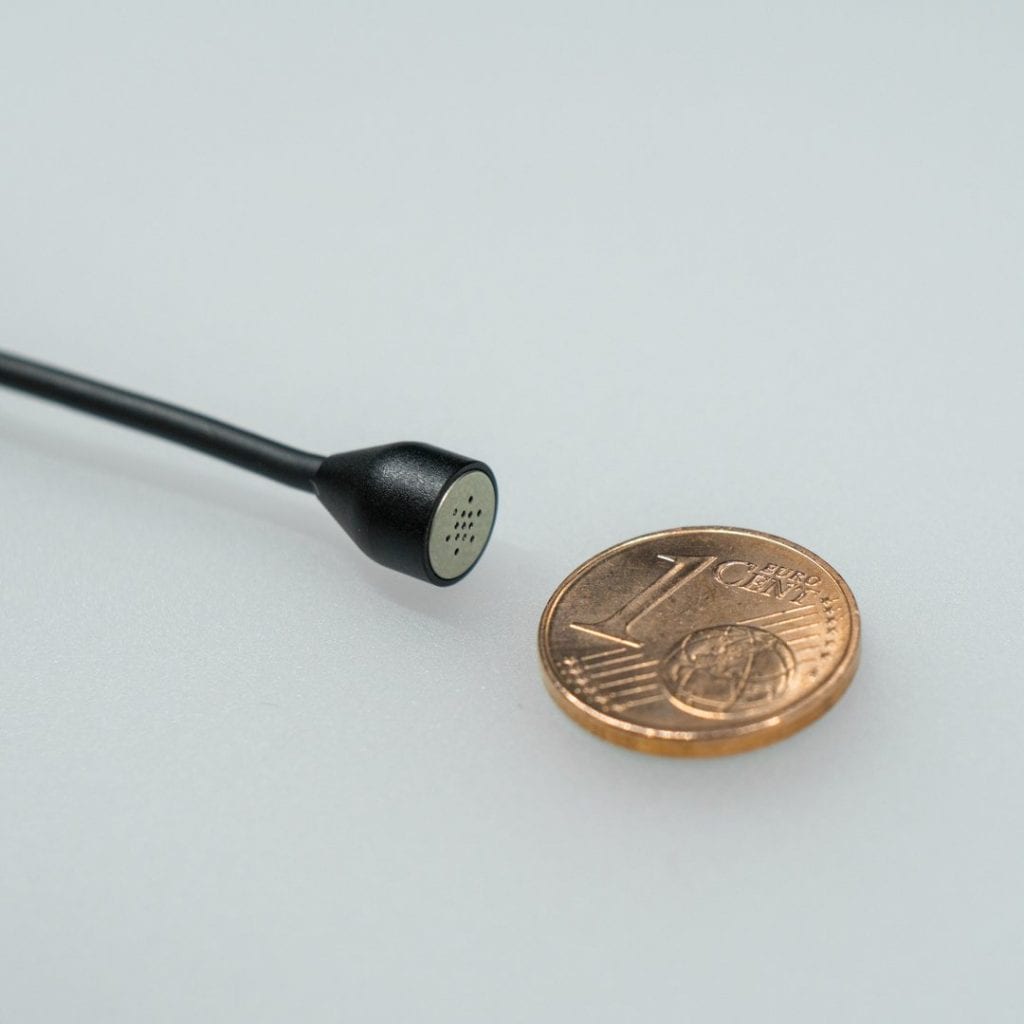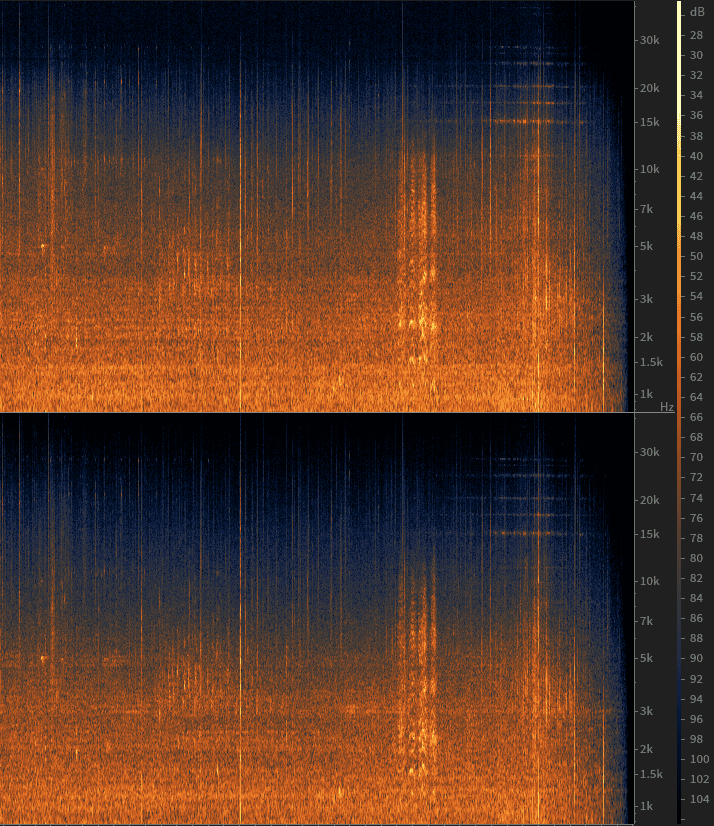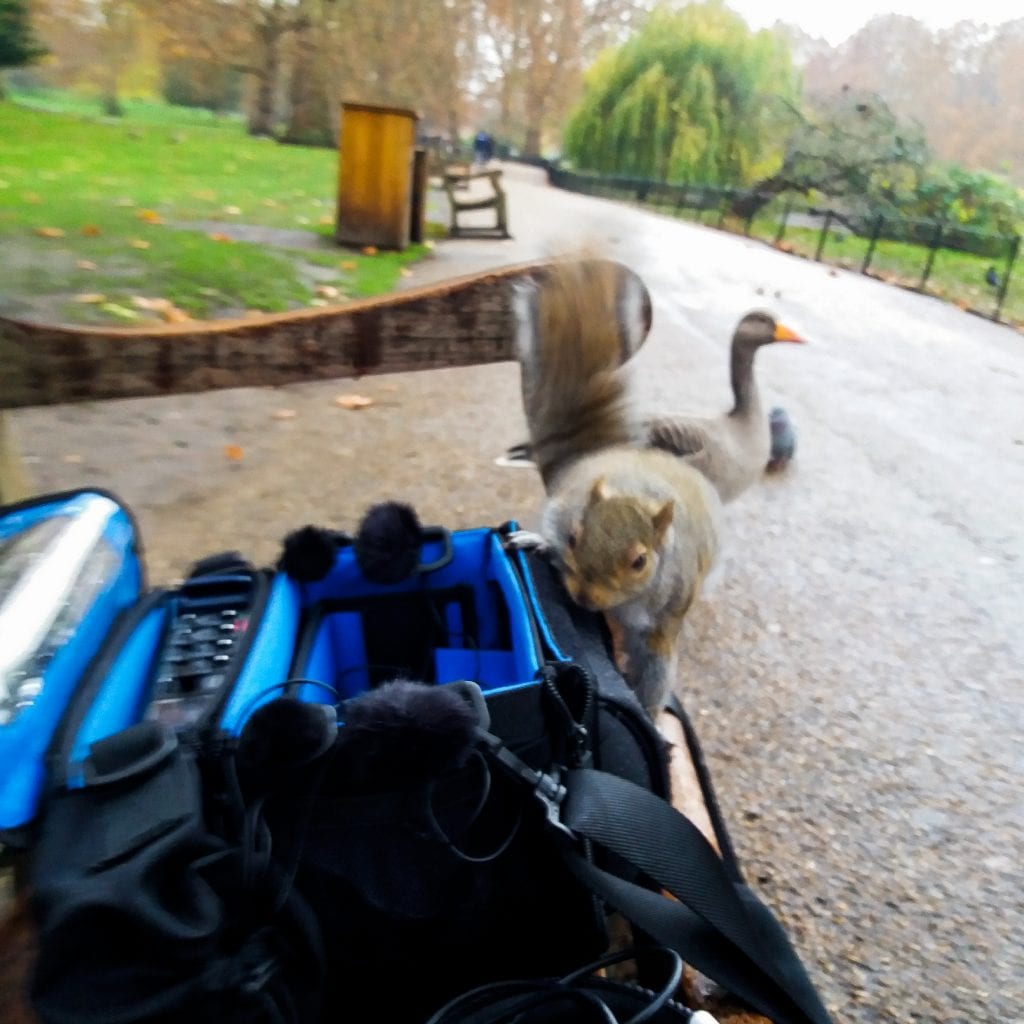The other week I was in London and had a couple of hours before my flight back to France. I managed to meet up with fellow sound recordist Phill Mill, who has recently bought a pair of the LOM mikroUši Pro lavalier microphones. I’d heard good things about them and at just €120 the pair, I was keen to test them in the field.
LOM
LOM is a record label and microphone manufacturer set up by Jonas Gruska who, to me, is a bit of a legend in the field recording community. Jonas has been consistently designing and supplying extremely good value for money solutions for sound artists since before I became interested in Field Recording. Along with electret mics, Jonas makes high quality and intuitive microphones for electromagnetic listening. He also designed and sells an extension for the frustratingly fiddly Mixpre knob. Brilliant idea!
On his site, Jonas describes the mikroUši:
mikroUši Pro /mikrouʃɪ:/ is a pair of phantom-powered stereo-matched, high quality omni-directional electret microphones. Compared with regular built-in microphones supplied with many recorders, Uši have exceptionally low noise and high sensitivity, in addition to their tiny size(only 6.8mm in diameter). They are especially useful for recording delicate sounds and environments.

Comparing Mics
For me the DPA 4060‘s are the benchmark for professional lavalier mics. I use them for everything from natural ambiences to binaural city recordings. Of course they come with a price tag. Last time I looked a pair cost around €700, more than 5 times the price of the mikroUši.
This isn’t a shootout but rather my thoughts on the mikroUši, having had the DPA 4060s available as a reference. Jonas has also made a vocal comparison between a 4060 and mikroUsi available here and a guitar recording comparison here. To really shootout these mics I would have to record in multiple environments including some dialog in a treated room. I would ideally pitch them against lavalier mics of a similar price and from another independent manufacturer, such as the Naiant X-X or FEL communications XLR EM172 mics which have also been recommended to me for field recording.
The Recording
We were using the phantom powered Pro version of the mikroUsi, which has XLR connectors instead of a plugin powered minijack connection. With a microphone diameter of just 6.8mm the Ušis are miniature. They are almost as small as the DPAs (5.4mm diameter). The 1.5m cable looked to be of decent strength and well sealed to the mic capsule. This is important as the XLR connection can’t be removed, so one should be careful not to bend the end when storing. We connected all 4 mics to a Zoom F8, set to record at 192kHz.
Phill and I headed over to St James’s park which has a Pelican colony and about as much wildlife as you can find in central London. Whilst there were no pelicans to be seen, a small menagerie of very friendly, very overfed animals approached us. In particular there was one Greylag goose who was convinced that we were about to start dispensing food at any moment!
We recorded for around 10 minutes, with the mics attached to each side of the F8’s recorder bag and set down on a park bench. The recording contains the background drone of the city, various midfield birdcalls, some close up sounds like people walking by and the quiet but persistent vocalisations of a begging goose!
We had to lower the gain on the mikroUši channels quite a bit to match the input levels of the 4060s. On paper the Uši’s have 20dB(A) of self-noise, 3dB(A) less than the 4060s! However even the fairly quiet park was loud enough for me not to notice any prevalent self-noise in either mic.

The results
On listening back my initial thoughts were that the mikroUši, like the 4060s, have a very pronounced, smooth and rich bass. In fact seeing as the traffic rumble was only distant, I struggled to hear much difference between the mics at all. Perhaps differences would be more noticeable if there were closer sources of bass.
The mids also seem well balanced and natural, particularly with the closer sources. Our own voices sounded clear and neutral with no obvious boosts or dips.
Here we can listen to some MP3 comparisons. No processing has been done aside from normalisation. 96kHz WAVs are available here.
Recording 1 in St James’s Park: Quiet ambience, city drone, people passing, rain, distant birds.
DPA 4060
LOM microUši
Recording 2 in St James’s Park: Close goose vocalisations, crow calls, rain, people passing
DPA 4060
LOM microUši
It has to be said that the 4060s present a much increased clarity in the upper mids and highs. When A/Bing between the two tracks, the background ambience sounds a little dull through the MikroUši by comparison. The differences are accentuated with sound sources in the mid-field. The Uši transients just don’t seem quite as fast. For example birds that pass lack a certain crispness to their calls and leave me wanting to clear a space for the sound through equalisation.
We can see that extra clarity when comparing the mic’s spectrograms. From about 3kHz upwards on the lower chart we start to see less high frequency detail (in orange) when compared to the DPA. Of course all this is to be expected when comparing €120 mics to €700 ones. Impressively in the spectrogram both mics capture well beyond 40kHz, which is really useful if you’re ever likely to slow any of your sounds down. It also looks as though the DPAs are a little noisier too, seen by comparing the space above 20kHz.

DPA 4060 on top and mikroUši on the bottom
mikroUši uses
Considering their low price I can think of several situations where I would find the mikroUši useful:
Indi film makers
The mics did a good job with close sources and in Jonas’ vocal comparison recording I found the mikroUši to be almost indistinguishable from the 4060. Working in post production I sometimes get asked to help in situations where the recordings are less than optimal. Often its because either the filmmaker didn’t have enough mics, or a lav stopped working and there was no backup available. If I were a film maker i’d definitely see this as a good value for money solution.
Experimentation and risky situations
Sound equipment ‘aint cheap and on top of that I find myself in situations fairly often where I’m concerned for my equipment. Sometimes I’m in locations where flashy equipment could potentially lead to a mugging. For these situations its worth having a low cost and lightweight rig available. Other times its nature which is dangerous. Recording anywhere with water or rain involved requires a lot of attention. Also cables can easily be gnawed through by critters, making me reluctant to leave expensive mics out overnight in the wild. Its also worth noting that for less than €500 you could make a portable, 4 channel surround sound solution. I would just speak to Jonas about possibly matching all 4 mics before buying.
Beginners / hobby field recordists
The non-pro version of the mikroUši connects by 3.5mm jack and can be powered off just plugin power. This makes it ideal for use with ‘prosumer’ quality recorders. It can be a difficult decision to know how much to spend when you’re just getting into field recording. On Paul Virostek’s amazing blog, he discusses what he dubs as “the gear gap” and how to get around it. The mikroUši will deliver an exciting level of quality to your recordings without breaking the bank. I would argue that lavs are the first microphones you want to buy as a recordist, because they are so versatile, something that I wrote about in my previous article. If field recording I would advise using them for more direct and noisier ambiances; city sounds, sporting events, protests, airshows etc. where subtleties in the higher frequencies are less critical. They are so small that they can also be used for binaural recording. Simply attach them to a pair of glasses or earbuds for a simple quasi-binaural stealth setup.
Close sources
This is something where all lavs excel due to their size. They are able to sit in spots that are just too small for anything larger. Pipes, machines, drains, vehicles, you name it. If its more than a centimetre wide you can jam a mic in there and discover all sorts of sounds. Its also worth using lavs to ‘spot mic’ birds that regularly sing from a certain tree or bush. Larger microphones tend to put them off but lavs are very easy to hide. As already mentioned the Mikrousi do a very good job with close sources.

Summary
Overall i’m really impressed with the mikroUši considering the price. Personally I wouldn’t consider them for recording quiet ambiences. As much as I love my DPAs, they already push the limit of how much self-noise I’ll accept in an ambient recording. And whilst the mikroUši are sensitive, I think they lack a little too much high frequency content to make them the right choice. If I was on a budget but wanted to record quiet sources I would look at larger condenser microphones which also typically have better signal to noise ratios for the price. For a bit more money its possible to pick up a Rode NT4 stereo cardioid mic second-hand, which is both low noise and high sensitivity. The tradeoff is of course size, weight, and less impressive bass response.
Further Comparisons
Through the LOM instruments facebook page I found a couple of user-made comparisons that are worth checking out. Kai Paquin compares the mikroUši to a Sanken co100k which can be listened to here.
There is also the mikroUši’s big brother, which is still compact and listed as being 6dB(A) quieter. Recordist Marcel Gnauk has previously recorded the Uši Pro alongside 4060s in the exciting setting of the Singapore F1 GrandPrix. He used the same recorder as us, and has kindly made the recordings available to download here.


Comments
Thank you so much for this article. It is so useful for one just thinking about possibly getting the DPA mics.
I enjoyed your article. Thanks for posting! I’ve ordered the LOM microUši and I’m looking forward to experimenting with it. I’ve owned a stereo pair of 4060’s and I currently have a 4061. Great mics too.
Thank you for this comparison and sharing of the 96k files. For fun I did a quick EQ-match of the MikroUsi TO the DPA 4060 using Fabfilter’s Pro-Q3. Here is a link to the preset as well as a Reaper session that references the audio you shared above, with the EQ-matching plugin in place.
https://www.dropbox.com/s/iwbsuiyl32ljai7/Mikro%20USI%20to%204060%20with%20Pro-Q3%20EQ%20match.zip?dl=0
Thank you so much for this article! After I lost my Sennheiser 8020 I have been looking for a cheaper solution for now.
For the cost this might be a great one.
Oh no! Loosing a microphone sounds like a complete nightmare!
Thanks for this article! I’m just getting into field recording, looking to upgrade my setup from just a Zoom h5. I’ve used the 4060’s before through uni so this comparison is really helpful!
What a great read, I just received a set of LOM Usi mics and really looking forward to trying them out.. thanks for writing this.
Hi, very helpful review. I own a Rode NT4 and i am having some trouble to adapt it to my nature hikes, due to size & weight, and the incompatibility with most blimps duebto its diameter. Which ones could be an alternatives to the NT4?
Hey Juan you’re welcome. I own an NT4 too – it is a heavy mic! Firstly I take the batteries out and run it off phantom power. Secondly I have adapted a children’s toy with a Rycote “baby ball gag” to make a super lightweight blimp! You can find a picture of it on my twitter:
Nice comparison! I did the exact same a while back as I have access to both pairs. My findings match yours pretty much exactly. In addition I compared both mics ability to handle high frequency transients- the old jangling keys test- and found that the Usi’s would square off the louder transients, while the DPAs would take them in stride. This wasn’t audible to me as clipping, but was definitely present in analysis and may be related to the over HF handling characteristics of the Usi. That said, I completely agree with your assessment of their value…good for many applications I wouldn’t want to put the DPA in. And if I ever drop them down a well I won’t be too put out!
Wow thanks I’d never thought of testing with keys. The simple ideas are always the best! Will incorporate into future comparisons
keys work well…we also used to use the cellophane from a cigarette pack. When crushed slowly in the hand it generates crazy high frequency transients that will challenge almost any microphone. Thanks again for the comparison!
Where can I buy the Usi?
Good question! At the moment they are completely sold out… Anybody knows of a good alternative in the same price range?
They usually come back in stock every now and again. You can put yourself on the waiting list to get the info. People have spoken of good results from Micboosters’ Clippy mics, but I’ve yet to try them myself